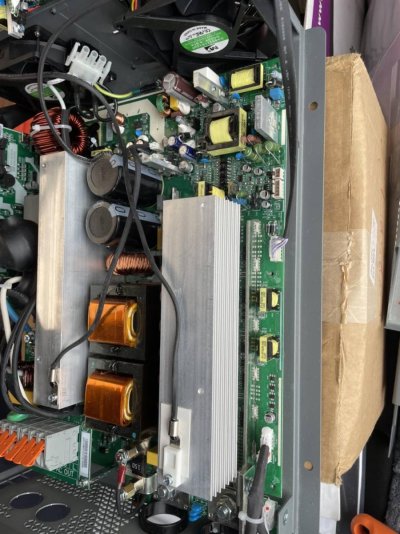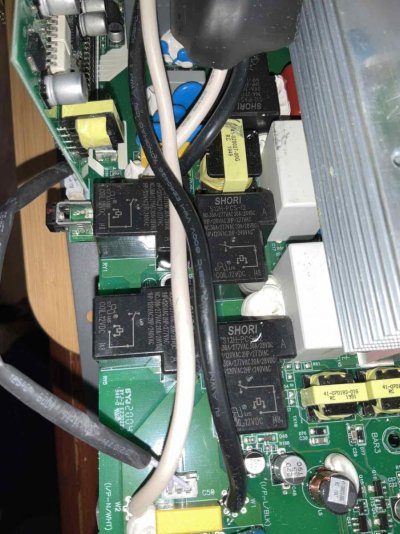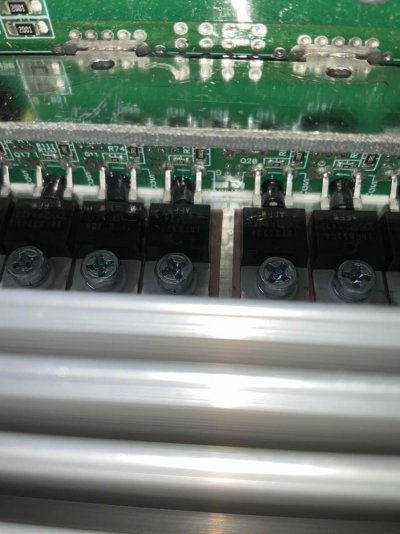Good news. Looks like the input section FETs (Field Effect Transistors) are OK. They rarely fail open. Do the same measurements in the output section. This is the section that converts the 160V DC to AC. Measure the FETs and caps as before.
Also measure the resistance on the DC input terminals and the AC input/output terminals.
Well, here are the results. This was much more difficult, because it is hard to see anything and the boat is rocking constantly for the last few days. I've made few more pictures of the FTE section.
DC terminal + shows 0.3 ohm
DC terminal - shows 0.4 ohm
AC terminals all 0.3-0.4 ohm
2 large white capacitors on the left of the grill show 3.52 Mohms
3 medium orange capacitors show 10.1 Mohms at start and the number keep going down slowly
FTE
I am not sure how many they are. It seems total of 9, but I cannot see from the front. I will list 9 measurements, but it could be only 8 of them.
Starting from the bottom one and going up.
Leg left with center - 1.95 Mohm
Leg left with leg right - 38.2 Kohm
Leg center with leg right - 1.95 Mohm
Leg left with center - 1.56 Mohms
Leg left with leg right - 38.4 Kohms
Leg center with leg right - 1.58 Mohm
Leg left with center - 0.625 Mohms
Leg left with leg right - 38 Kohms
Leg center with leg right - 0.626 Mohm
Leg left with center - 4.19 Mohms
Leg left with leg right - 36.6 Kohms
Leg center with leg right - 4.24 Mohm
Leg left with center - 12.82 Mohms
Leg left with leg right - 22.6 ohms
Leg center with leg right - 12.85 Mohm
Leg left with center - 12.54 Mohms
Leg left with leg right - 22.6 ohms
Leg center with leg right - 12.49 Mohm
Leg left with center - 12.54 Mohms
Leg left with leg right - 22.7 ohms
Leg center with leg right - 12.51 Mohm
Leg left with center - 12.42 Mohms
Leg left with leg right - 22.6 ohms
Leg center with leg right - 12.40 Mohm
?
Leg left with center - 3.66 Mohms
Leg left with leg right - 31.1 Kohms
Leg center with leg right - 3.72 Mohms


























